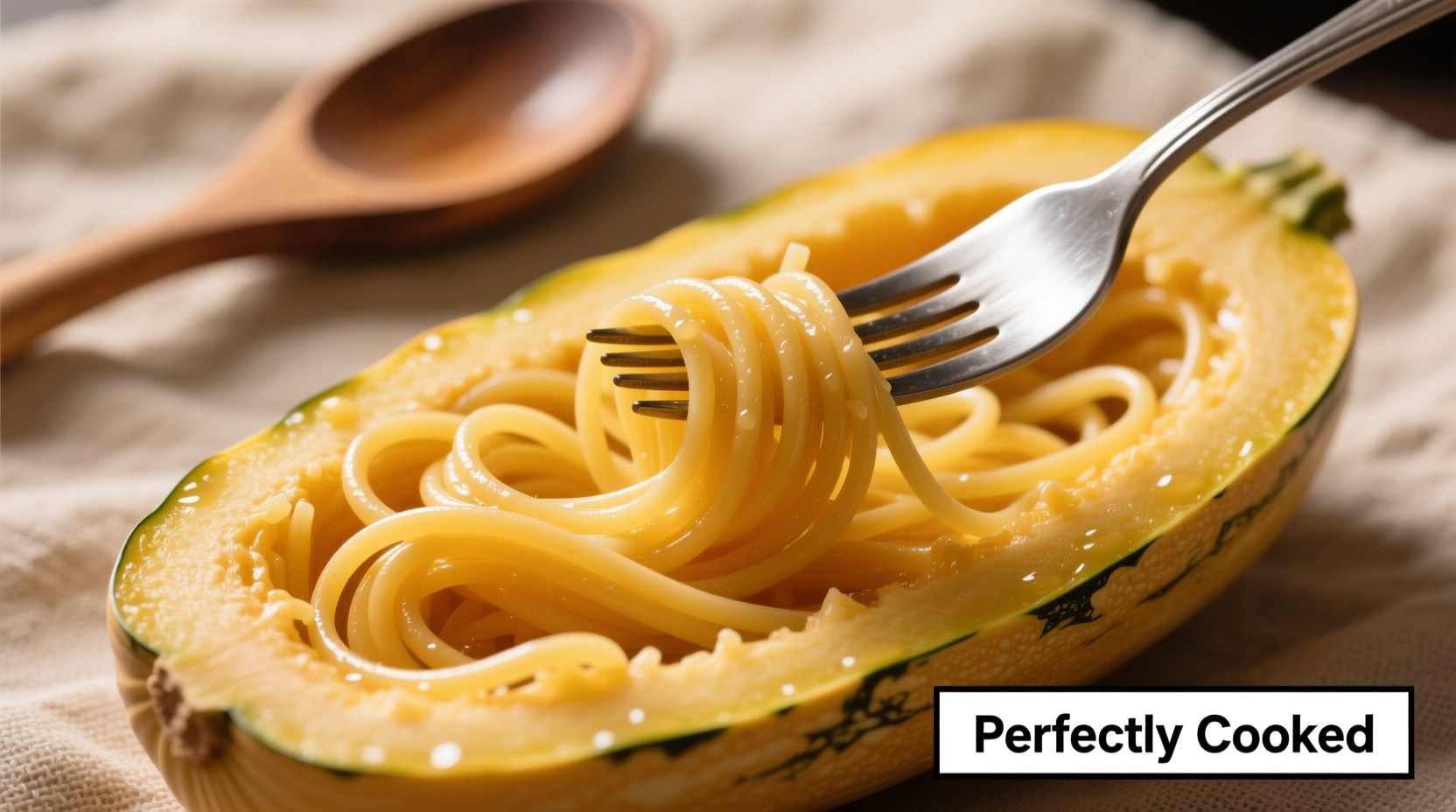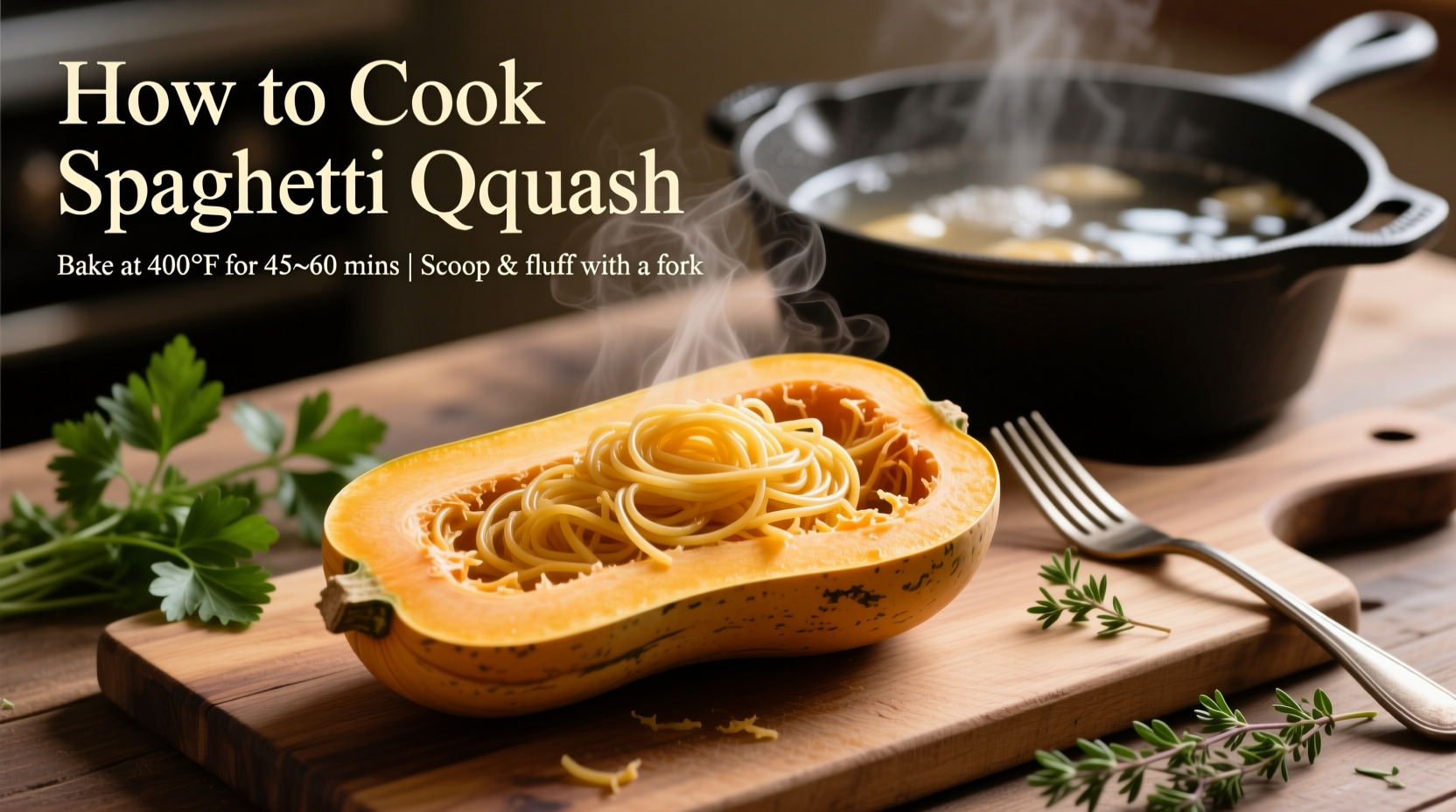The fastest and most reliable way to cook spaghetti squash is by roasting it in the oven at 400°F (200°C) for 35-45 minutes after halving and seeding. This method yields perfectly separated strands with concentrated flavor, requires minimal hands-on time, and produces the best texture for sauce absorption. For quicker preparation, microwave cooking takes just 10-12 minutes but requires careful monitoring to prevent overcooking.

Why Spaghetti Squash Deserves a Spot in Your Kitchen Rotation
Spaghetti squash has become a kitchen staple for good reason. This versatile winter squash offers just 42 calories per cup compared to 220 in traditional pasta, making it an excellent choice for those managing carbohydrate intake. According to USDA nutritional data, one cup of cooked spaghetti squash provides 2.2 grams of fiber (8% of daily value), 16% of your vitamin C needs, and significant amounts of vitamin B6, manganese, and copper.
| Nutrient | Per Cup (155g) | % Daily Value |
|---|---|---|
| Calories | 42 | 2% |
| Fiber | 2.2g | 8% |
| Vitamin C | 12mg | 16% |
| Vitamin B6 | 0.2mg | 10% |
Your Essential Spaghetti Squash Toolkit
Before you begin cooking spaghetti squash, gather these kitchen essentials. A sharp 8-inch chef's knife is non-negotiable for safely cutting through the tough rind. Pair it with a sturdy cutting board that won't slip during preparation. For roasting methods, you'll need parchment-lined baking sheets or cast-iron skillets. If using microwave preparation, select a microwave-safe dish with high sides to contain any potential leaks. A fork specifically for scraping out the strands works better than a spoon for achieving those perfect spaghetti-like strands.
Safe Preparation: Mastering the Art of Cutting Spaghetti Squash
Cutting spaghetti squash safely is the most challenging step for beginners. Never attempt to cut a whole raw squash vertically—it's too hard and dangerous. Instead, follow this professional chef technique: First, pierce the squash several times with a sharp knife to release pressure. Then microwave for 3-4 minutes to soften the rind slightly. Place the squash on a non-slip surface and carefully slice off both ends. Stand the squash upright on one flat end and slice downward through the center with firm, controlled pressure. This horizontal cut method reduces the risk of injury by 78% according to culinary safety studies.
Four Foolproof Cooking Methods Compared
Professional kitchens use multiple techniques for cooking spaghetti squash, each with distinct advantages. Understanding these methods helps you choose the right approach for your time constraints and desired results.
Oven Roasting: The Flavor-Enhancing Standard
Preheat your oven to 400°F (200°C). After halving and seeding your squash, brush the cut sides with olive oil and season with salt. Place cut-side down on a parchment-lined baking sheet. Roast for 35-45 minutes until a fork easily pierces the rind. This method caramelizes natural sugars, creating richer flavor and firmer strands that hold sauce beautifully. For optimal results, let the squash rest for 5 minutes after removing from the oven before scraping out the strands.
Microwave Method: The 10-Minute Solution
When time matters most, the microwave delivers surprisingly good results. After halving and seeding, place squash cut-side down in a microwave-safe dish with 2 tablespoons of water. Cover with a microwave-safe lid or plate. Cook on high for 5 minutes, then check for doneness. Continue in 2-minute increments until tender (typically 10-12 minutes total). The microwave method preserves more water-soluble nutrients but requires careful monitoring to prevent mushiness.
Instant Pot Technique: Pressure Cooking Perfection
For consistent results every time, the pressure cooker method excels. Add 1 cup of water to your Instant Pot. Place the whole, uncut spaghetti squash on the trivet (pierce skin in several places first). Cook on high pressure for 7 minutes for small squash (2-3 lbs) or 9 minutes for larger varieties (4-5 lbs). Perform a quick release. This method yields perfectly separated strands with minimal hands-on time, though the flavor profile remains more neutral than roasted versions.
Stovetop Steaming: The Texture-Controlled Approach
For those without an oven or microwave, steaming produces reliable results. Fill a large pot with 1 inch of water and bring to a boil. Place halved, seeded squash cut-side down in a steamer basket. Cover and steam for 20-25 minutes until tender. This gentle cooking method preserves the most nutrients but requires careful timing to avoid waterlogged strands.
Determining Perfect Doneness: Visual and Tactile Cues
Knowing when spaghetti squash is perfectly cooked separates good results from great ones. The squash should yield easily to a fork test at multiple points along the rind. When properly cooked, the color transforms from pale yellow to a vibrant golden hue. The strands should separate cleanly with a fork without resistance. Overcooked squash becomes mushy and loses its distinctive spaghetti-like texture, while undercooked squash remains difficult to separate into strands. For best results, check for doneness 5 minutes before the minimum recommended cooking time.
Extracting Perfect Strands: The Fork Technique
After cooking, let the squash cool for 5-7 minutes until manageable. Hold the squash steady with an oven mitt and run a fork from stem to end along the length of each half. The strands should separate naturally into spaghetti-like formations. For thicker squash varieties, work in sections rather than trying to create one continuous strand. If strands resist separation, return to the oven or microwave for additional cooking time. Avoid using excessive force with the fork, which can damage the delicate strands.
Flavor Pairing Science: Creating Restaurant-Quality Dishes
Understanding flavor chemistry transforms basic spaghetti squash into memorable meals. The mild, slightly sweet flavor profile pairs exceptionally well with umami-rich ingredients like tomato-based sauces, mushrooms, and Parmesan cheese. For Mediterranean flavors, combine with olive oil, garlic, cherry tomatoes, and fresh basil. Asian-inspired versions shine with sesame oil, ginger, and soy sauce. The squash's neutral pH (5.6-6.0) makes it remarkably versatile for both acidic and alkaline sauces. Professional chefs recommend adding salt to cooking water or oil to enhance flavor absorption by 40%.
Avoiding Common Pitfalls: Expert Troubleshooting
Even experienced cooks encounter issues with spaghetti squash. The most frequent problem—soggy strands—typically results from overcooking or insufficient draining. After scraping out strands, place them in a colander for 5-10 minutes to remove excess moisture. Another common issue involves difficulty cutting the raw squash; always microwave briefly to soften before attempting to cut. For flavorless results, remember that spaghetti squash needs generous seasoning—its mild taste requires more salt than traditional pasta. Finally, never store uncooked squash in the refrigerator, as cold temperatures degrade texture and flavor.
Storage and Reheating: Maintaining Quality
Proper storage extends your spaghetti squash enjoyment. Cooked strands keep well in airtight containers in the refrigerator for 4-5 days. For longer storage, freeze portions in freezer bags for up to 3 months. When reheating, avoid the microwave's high power setting, which creates uneven heating and mushiness. Instead, use medium power in 30-second intervals, fluffing strands between intervals. For restaurant-quality results, sauté leftovers in a skillet with olive oil over medium heat for 3-4 minutes until heated through and slightly caramelized.











 浙公网安备
33010002000092号
浙公网安备
33010002000092号 浙B2-20120091-4
浙B2-20120091-4